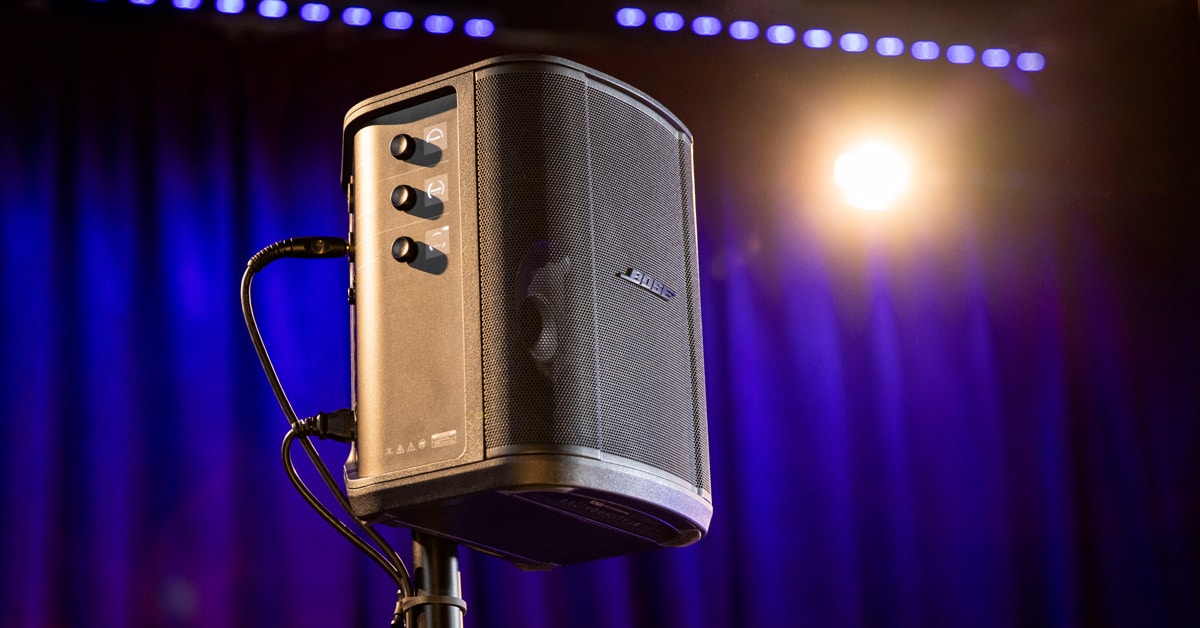The Bose S1 Pro+ portable PA system is a godsend for performers who want to play wherever and whenever they want with a minimum of hassle. Combining the battery-powered portability of the original S1 Pro with advancements in the mixer and controls, expansion of compatibility with the Bose ToneMatch system, and the addition of built-in wireless capability along with functionality to support USB livestreaming, the Pro+ is plus indeed. In a conversation with Craig Jackson, senior product manager for Bose portable systems, he expounded on the development of the S1 Pro+ and the integration of features from the renowned Bose L1 Pro series.
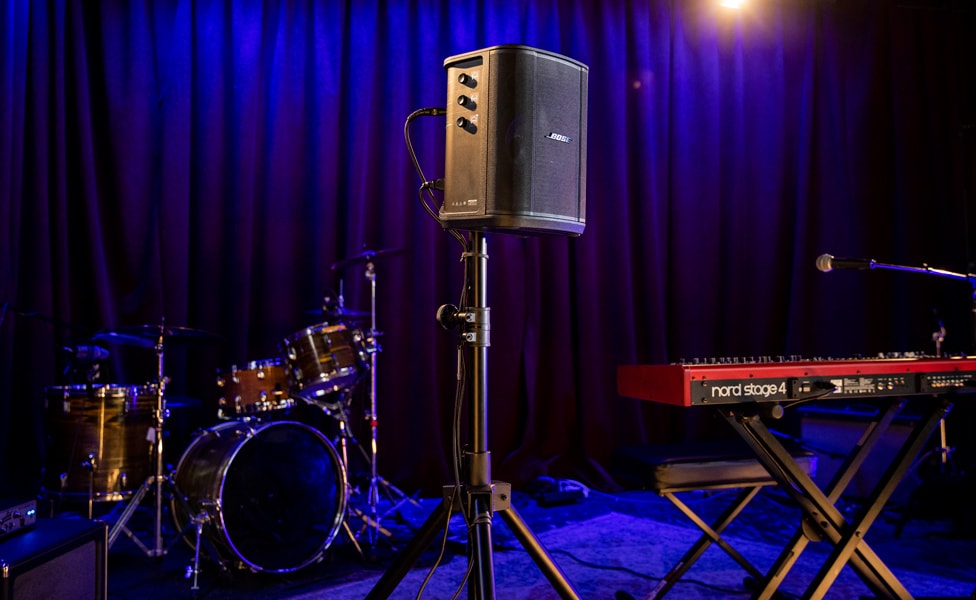
Five years on from the release of the S1 Pro, you’re releasing the new S1 Pro+. There are several new features, some of which feel like more than just a “+”. As you started developing the latest model, did you envision the users or the uses being the same?
Craig Jackson: Very similar. S1 Pro has been a very strong product for us. With S1 Pro+, we wanted to elevate the experience for the customer. Portability and ease of use have always been two of the core tenets of everything that we do. So, we focused on how we could make it even better and at the same time keep what customers really loved about the original S1.
We didn’t want to make it bigger and it couldn’t be heavier. Where could we go to make things easier for customers? And that's where the idea of making the UI simpler and integrating wireless came from.
There’s been a number of advances in the Bose line since the original S1 Pro came out. Can you pinpoint any specific technologies or features that made their way from other products into S1 Pro+?
Yeah, absolutely. When we were designing S1 Pro+, we looked at the features of the L1 Pro family, and integrated what customers loved. They liked what we did with the encoders and the easy access to bass, treble and reverb, along with the ability to have full app control and to mix from a mobile device and access to the whole suite of ToneMatch presets. We brought that all into the S1 Pro+. If you own an L1 Pro, that whole feature set comes into the new S1 Pro+, a 1:1 match. And if you own an S1 Pro and you're upgrading, it's a huge step forward in terms of what you can do and the control that you have.
When you look at the interface on the original S1 Pro, it’s a bit like, “How much more could this possibly be streamlined?” It doesn’t seem like there’s much that can be improved upon. And then you see the S1 Pro+.
I agree with you. The S1 Pro is already an easy product to use. We know so many of our customers just want to get to performing and not be bogged down with a complicated UI.
When we looked at adding displays, we could’ve taken the digital mixer approach where there's a single display, and you share that across all of your channels. For certain people, it's a difficult mental model. We decided to provide a dedicated display per channel. What you see is what you get. Each display is associated with its channel, which makes it a lot easier to walk up to and use.
I was really impressed by the way the displays rotate with the unit itself. Another small thing that really makes a big difference. What brought that about?
When we committed to the OLED displays, we already knew we were going to have an accelerometer in the product for the auto-EQ adjustments, based on the position of the speaker. It was a pretty straightforward thing to do. It makes the experience that much better when you're using it in whatever orientation.
How would you describe the sound quality improvements from S1 Pro to S1 Pro+?
We wanted to maintain all the goodness of the S1 Pro, and then look at little areas where we would refine. There's improved port performance, and I’d say that the overall system EQ is a little bit more refined. So, it's an evolution of the S1 Pro sound if you will.
One of the things that jumped out at me was that you somehow managed to make it about a pound lighter, which is like a 6–7% difference. How did you pull that off?
That's smart mechanical design and people who really care and are proud of the work that they do.
When we initially started the program we set a stretch goal to make the S1 Pro+ lighter than the original S1 Pro. Some folks, particularly on the mechanical engineering side, took it as a challenge. They made some very smart design decisions and that's how we got the pound. It's pretty amazing. It is a high percentage.
Did that affect the overall voicing?
No. It doesn’t affect the voicing because we're using the same acoustic volume. That's a constraint, It comes down to being smart about where you can shave bits and pieces out.
Speaking of sound, you mentioned ToneMatch a bit earlier. For someone new to Bose, can you give some context on what ToneMatch is exactly?
ToneMatch is a group of presets that are focused on making sure that your source, meaning your instrument or microphone, sounds its best through our system. And what makes it nice is that it's a closed loop. We know the playback, and you can select the source. So, therefore, we can give you an optimized sort of EQ so that your microphone or your acoustic guitar, or whatever, sounds its best through our system.
I like to think of it as, “What would a good live sound engineer do if they were mixing you? How would they EQ your guitar or your vocal on a system that they know?” It's a preset that I would say gets you 90% of the way there. And then, it's 10% to personal taste.
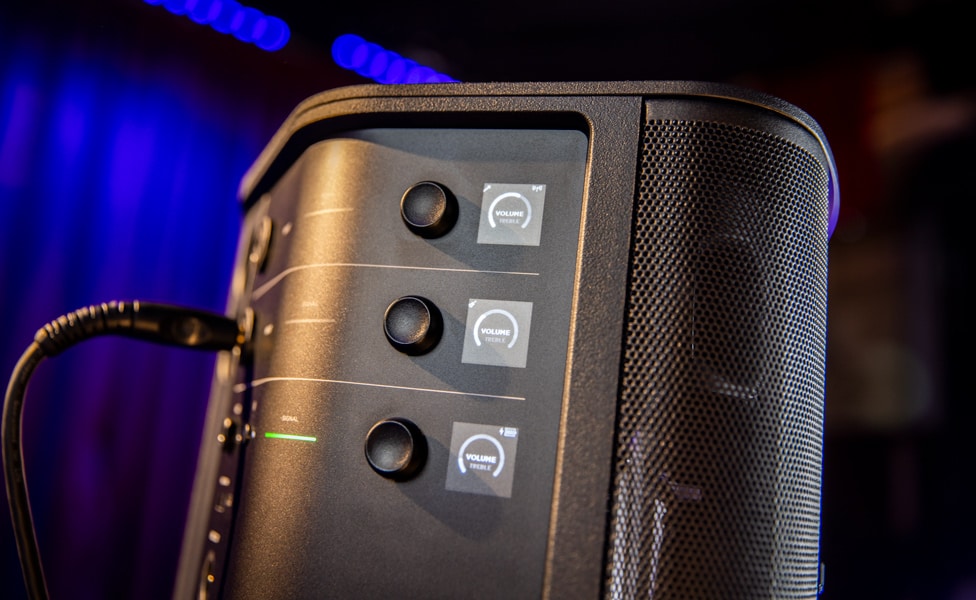
It's not even just microphone and guitar presets though, right? There are some model-specific presets?
Yeah. That's a good question. In the original S1, we had generic ToneMatch presets. You would select it with a switch on the back of the unit. And there were only two settings, Acoustic Guitar or Dynamic Microphone. Now, with the full ToneMatch library, you can choose a specific guitar or microphone model and even other specific sources. These aren’t models or emulations. They are preset EQs that are dialed in to make your gear sound its best through our system.
And that is a technology that is really shared across the Bose PA system line, right? Just tweaked according to the closed system that's being used?
Yeah. We added that in a big way to the L1 Pro family, coming from the ToneMatch T4S and T8S mixers. And now that same integration that’s in the L1 Pro is coming into the S1 Pro+, which is nice.
Perhaps the most notable upgrade from S1 Pro to S1 Pro+ is the wireless integration, with the built-in receivers and the optional accessory transmitters. Can you give us a bit of background on how that upgrade come about?
We looked at where phones have gone in recent history. Today, if I said, “Plug in a wire to your phone to stream music,” it would seem like a bunch of work. And we’ve seen so much more wireless being used in our industry.
So, we looked at it and said, “Well, it would be cool if we could have enough channels in the system for someone to do a performance completely wirelessly, from streaming music to controlling their system from the app to their actual physical instruments and microphones.”
The benefits are way faster setup, and easier teardown. All of us who have gigged, know that with cables, by the time you’re done setting up, your hands get grungy, and you’ve got to go wash them. Or it's two in the morning, and you want your teardown to be as fast as possible. Eliminating the cables makes a big difference. That was the stretch goal of, “How do we really make this an experience that, once you’ve done it a couple times, you don’t want to go back?” And that's the feedback that we have been getting. We're always bringing people in, testing products, getting input from the field, and that's what we hear.
All of the physical connections are still there. So, if you don’t want to get the transmitters at the time of the purchase, you can hook up your cables. And also, everybody likes to have a backup plan, so you can have the cables there if you need them.
I love that you can charge the transmitters right in the unit itself. What’s the approximate charge time?
For the transmitters, you’ll want to allow up to two hours for a full charge. With typical usage, they last for up to five hours, which should cover most every gig. And if you're not playing straight through, you can put it back into the main system and have it charge during set breaks. So, it covers the bases for sure.
While we’re talking charge time, we should also talk about the system battery, which allows you to use the S1 Pro+ unplugged. You’ll want to allow up to four hours for a full charge on that. With typical usage, that will give you about 11 hours of operation, but that’s obviously going to vary dependent upon the content played and the volume you’re playing at.
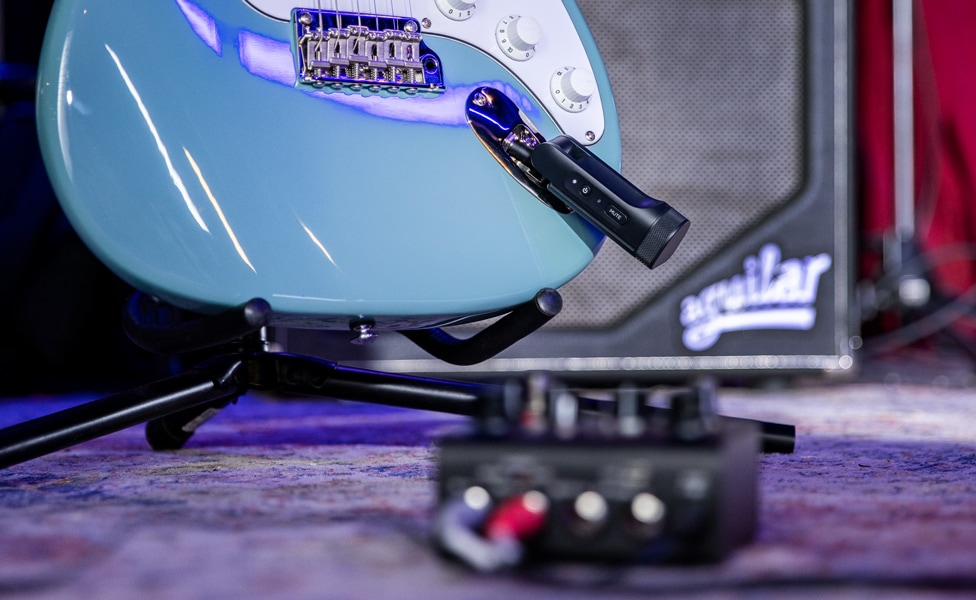
As I was digging into the S1 Pro+, I was really impressed with the series effect loop functionality when you’re using the wireless transmitters. Can you tell us a little bit about that?
When we were looking at this—before we even had the system—it was like, “Wait a minute. What if I had a modeler pedal or what if I had my stompboxes? I can't be wireless anymore.” Because the wireless transmitter has to be last in your signal chain. I said, “Could we use the physical channel input as an insert and then use an insert cable to make an effects loop?” So, when the system knows it's wireless, it makes the physical input an insert. And if you plug it in, you can put whatever you want in the chain. We had the conversation with engineering, and it was like, “Yeah, we can do that.”
So, you’re thinking of something like a HeadRush Prime or a Line 6 Helix, right? So, that can be relatively near the PA, wired up, but then you can just roam wherever you want as a guitarist, completely free.
Exactly. And the other cool thing is for practice at home. You can take a pedal, like a Strymon Iridium, and put it in the loop. And then, when you go to play, all you have to do is take the transmitter out, plug it in to your guitar and you're good to go. You can stream backing tracks from your phone to the S1 Pro+ and practice along. It’s super fun.
Within the app, we also have an FR/FR ToneMatch preset. It’s a subtractive EQ so the guitar model sounds correct and smooth. And, if you were playing a track, that isn't impacted because the ToneMatch preset doesn’t touch the system EQ, just the specific channel that you are using with your modeler.
Touching on the overall voicing of the speaker, you mentioned earlier that the entire unit will revoice based on its orientation. So, it’ll revoice if you’re using it in the tilted position as compared to as a wedge or on a speaker stand?
It's very simple. There's an accelerometer in the system, so it knows what position it's in. And, each position has a specific EQ. I would call the EQ “refinement” more than anything. They're not these drastic things. In fact, it's something that, if it’s working right, you won’t know that it's there. The system just always sounds good. We even have a sensor on the stand mount. So, if it goes on a pole mount, it knows, and it’ll revoice accordingly.
When you’re using more than one S1 Pro+, does it offer the same pairing modes as S1?
Yeah. We call it Dual Wireless Streaming. When the customer enables it in the Bose Music app, they can select whether they want it to be stereo or dual mono.
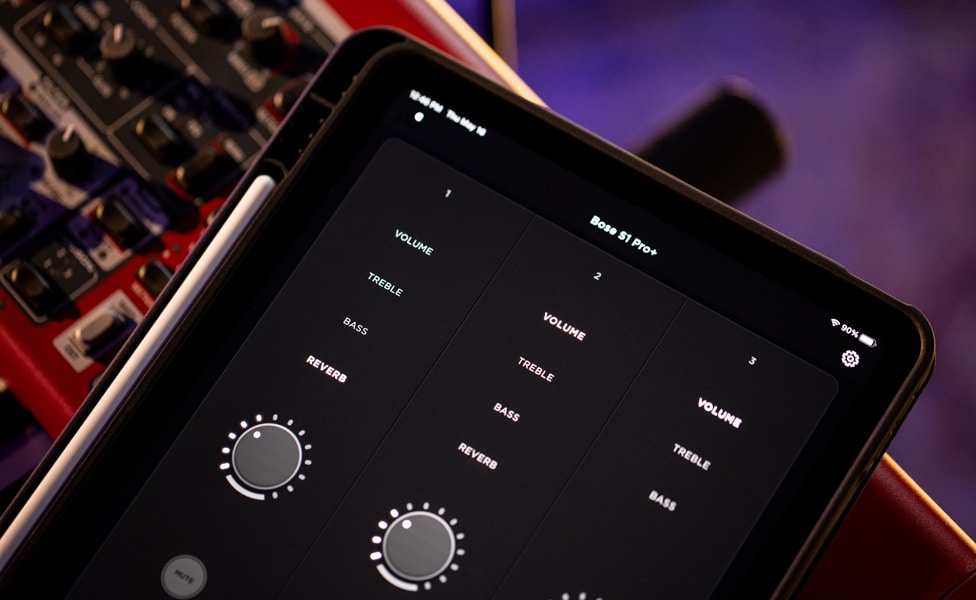
One key callout is that the new S1 Pro+ can’t be paired with an old S1. But it can be paired with an L1 Pro. So, it’s really great as a scaling option for different types of environments. For instance, a bar or club—even a house of worship—might have an overflow room where an S1 Pro+ works, where an L1 Pro might be a little overwhelming.
Exactly.
Are there any other less obvious features or specs that you think would be appealing to prospective customers?
Well, there is one feature that we call it livestream mode. Using the USB-C connector, you can plug your S1 Pro+ into a PC or Mac, and it will be recognized as a general-purpose audio device. It’s essentially like a one-sided audio interface—it’ll provide input, but not monitoring output. What that does is that it gives you essentially two gain stages to work with, so that you can send signal to your computer, through your streaming software, or whatever you’re using for your event, and you can also control the level in the room, independently.
As livestreaming has increased the past few years, we’ve seen some less technical folks that would just open their laptops and play, or put their phone up and play to that. We wanted to provide a simple plug and play solution for the customer that wants and easy way to livestream. So, this livestream mode lets you plug in and have your system get recognized, and then you can essentially stream something that's higher quality into whatever platform you're using.
And at that point, they can just worry about getting a great visual, and the great audio is going to come out of the S1 Pro+.
Correct.
That’s a very cool feature and definitely not the sort of thing you’d expect on this type of a portable PA speaker.
Exactly.
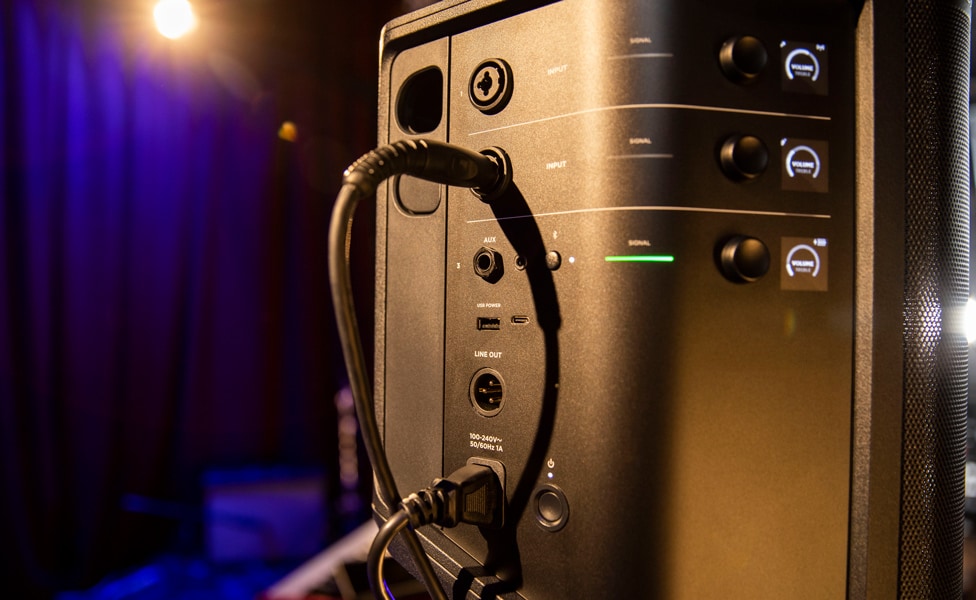
Well, thank you so much for your time today, Craig!
Thank you!










